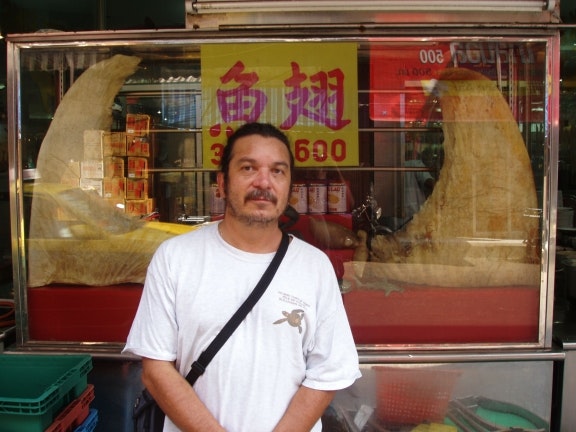
By 2004 Whitley Gold Award winner, Randall Arauz
With the listing of hammerhead sharks in Appendix II of the Convention on International Trade in Endangered Species of Wild Fauna and Flora (CITES) during the sixteenth Conference of the Parties (CoP16) held from March 4th -14th in Bangkok, Thailand, the world expressed the urgent need to protect this species from the threat posed by the international trade of its products, particularly fins, which are highly prized to prepare shark fin soup in Asia.
The latest scientific information available indicates that up to 100 million sharks are killed each year to meet the demand of the international market, which has led to a 90- 95% demise of global hammerhead shark populations. The need for action is compelling.

Costa Rica, along with Honduras and Brazil, proposed the inclusion of hammerhead sharks in Appendix II of CITES, hoping to finally interrupt this unsustainable extraction of sharks, which has been denounced for decades but for which no effective measures have been taken in a regional, or even less, a global context.
It must be pointed out that the listing of hammerhead sharks in Appendix II does not mean that a total ban on the international trade of the species will be installed, but rather guarantees through the issuing of a “Non Detriment Finding” by the exporting country that the extraction of specimens from the wild population was done in a sustainable manner. Failure to do so translates into economic sanctions. This of course, directly interferes with the current unsustainable extraction of sharks, something that the Asian block of nations, led by Japan and China, weren’t about to allow.
Lacking any technical arguments, they claimed before the delegates of the world that this measure would not only be too difficult to implement, but it would also have adverse effects on artisanal fisheries in developing countries. Nothing could be farther from the truth! Is Cites meant to work only when implementations measures are easy? In addition, artisanal fishers are not affected by Cites any way whatsoever, as they trade mainly juvenile sharks in domestic markets. In any case, if anything at all they benefitted by the measure, as it guarantees the sustainable exploitation of adults in the high seas. Incredibly enough, one of the main hurdles to overcome in order to achieve this victory in Cites emanated internally, from the very own fisheries management departments of each Central American country, all of which echoed the same technically unsubstantiated claims by Japan and China to oppose the proposal. Thanks to the favourable opinion of the Central American Environment and Development Council (CCAD), the Central American countries were able to override their own fisheries authorities and thus consolidated a block in favor of the hammerhead shark, which was joined by South America, Mexico, Canada, USA, the European Union and a block of West African nations.
And thus, Japan and China failed in their attempt to derail the hammerhead proposal, which was supported by more than two thirds of the 177 CITES member countries, as well as their effort to call for a second vote during plenary meeting, which could have succeeded if they would have had the support of one third of the member countries. Their defeat was overwhelming. Hurrah for Hammerhead Sharks!
I believe that if Japan and China learned anything at all, it’s that in Latin America we aren’t going to take the overfishing and depletion of sharks anymore. I just hope that the fisheries authorities of the region, that have been dedicated for decades to defend the interest of foreign fleets over the public interest, learned this lesson as well.